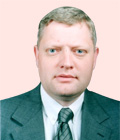
|
Tor Gunnar Overli
Managing Director
Asplan Viak Internet AS
Norway
Biography
Mr. Tor Gunnar Øverli is managing director of Asplan Viak Internet, and a senior advicer with 18 years of extensive experience in various fields of management, geo-informatics, project management, process-support and modelling from Europe, Middle East and Asia. He has participated in different EU funded research and development projects, including Plan4All, Plan4Business, GeoSmartCity and SDI4Apps. Mr. Øverli was member of the Inspire technical working groups for Area management.
He has worked closely with the Norwegian Coastal Administration for years, supporting their effort in improving spatial information management.
Abstract
Developing New Technology to Optimize Throughput and Performance in Oil Spill Operations
Co-Authors:
Frode Skjvestad, Senior GIS Advisor, Norwegian Coastal Administration
Simen Slotta, Senior GIS Advisor, Norwegian Coastal Administration
Working with oil spill response is often a challenging task because of information complexity and quantity. We need efficient information exchange within the response teams and between agencies involved. Field workers need proper tools for registration of oil spill, which can capture a high level of detail. Decision makers need a clear and concise presentation of data immediately after registration, in order to best prioritize equipment and crew. Using a standardized scheme for registration, like Shoreline Cleanup Assessment Technique (SCAT), ensures that relevant data is collected and made available where it is needed most. Dealing with these challenges in an efficient way, we will better be able to make a difference when organizing and conducting oil spill operations. Based on specification from, and in close cooperation with, the Norwegian Coastal Administration and Norwegian Clean Seas Association for Operating Companies, Avinet has developed an application for collaboration and information exchange between people working on shore and in operation headquarters. Using tablets and smartphones, field workers use a tailored application for field registration. Combining GPS and tracing of coastline gives an accurate estimate of length of oil spill, while offline capabilities ensures that work can be performed anywhere. Operation headquarters uses a web-based application for situation awareness, planning, statistics and preparation of reports and work orders with detailed instructions. This includes necessary information both to field personnel, involved agencies and the public. This paper describes how a new application and new technology can make operations more efficient, collaborative and verifiable.
|

